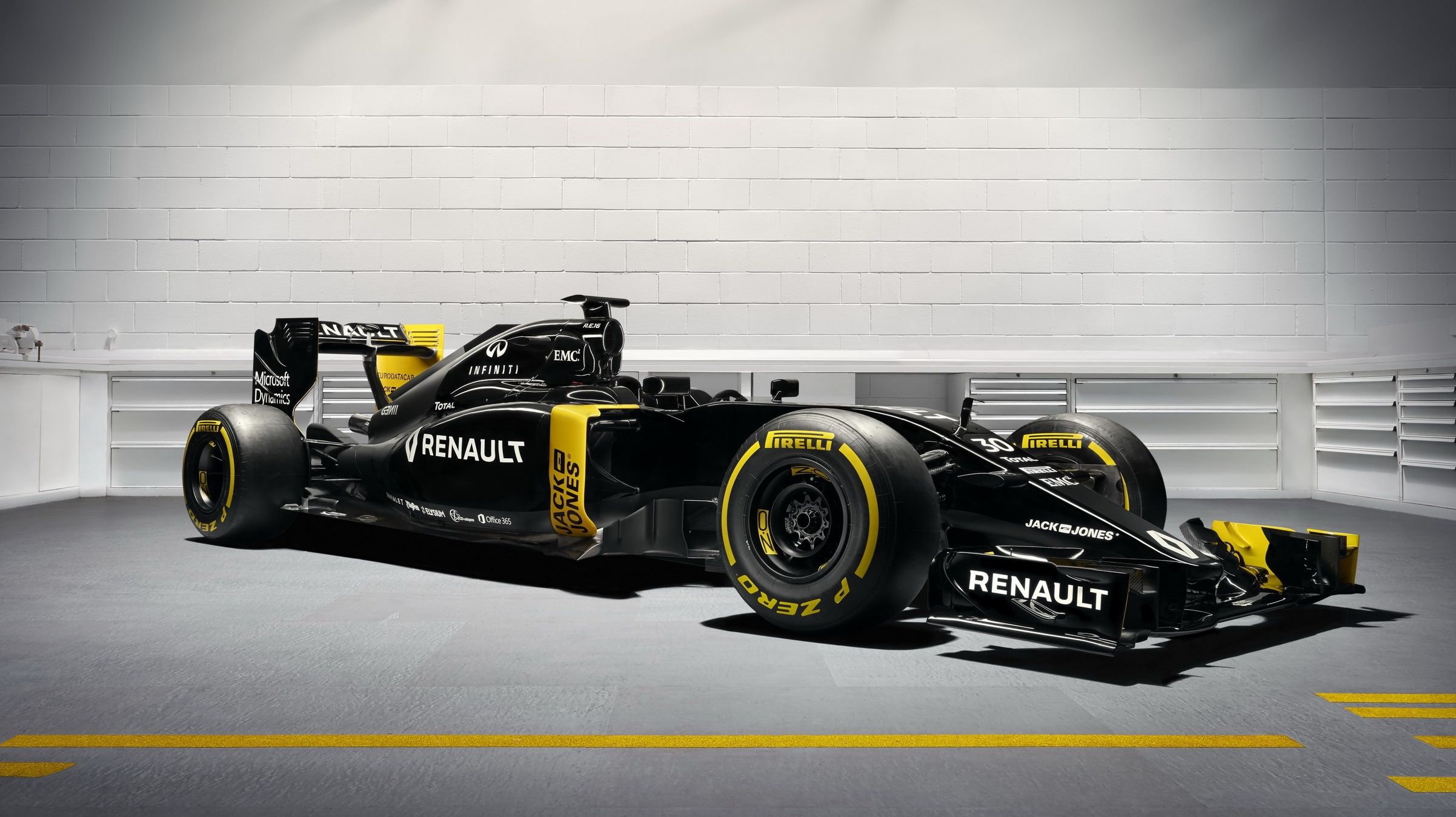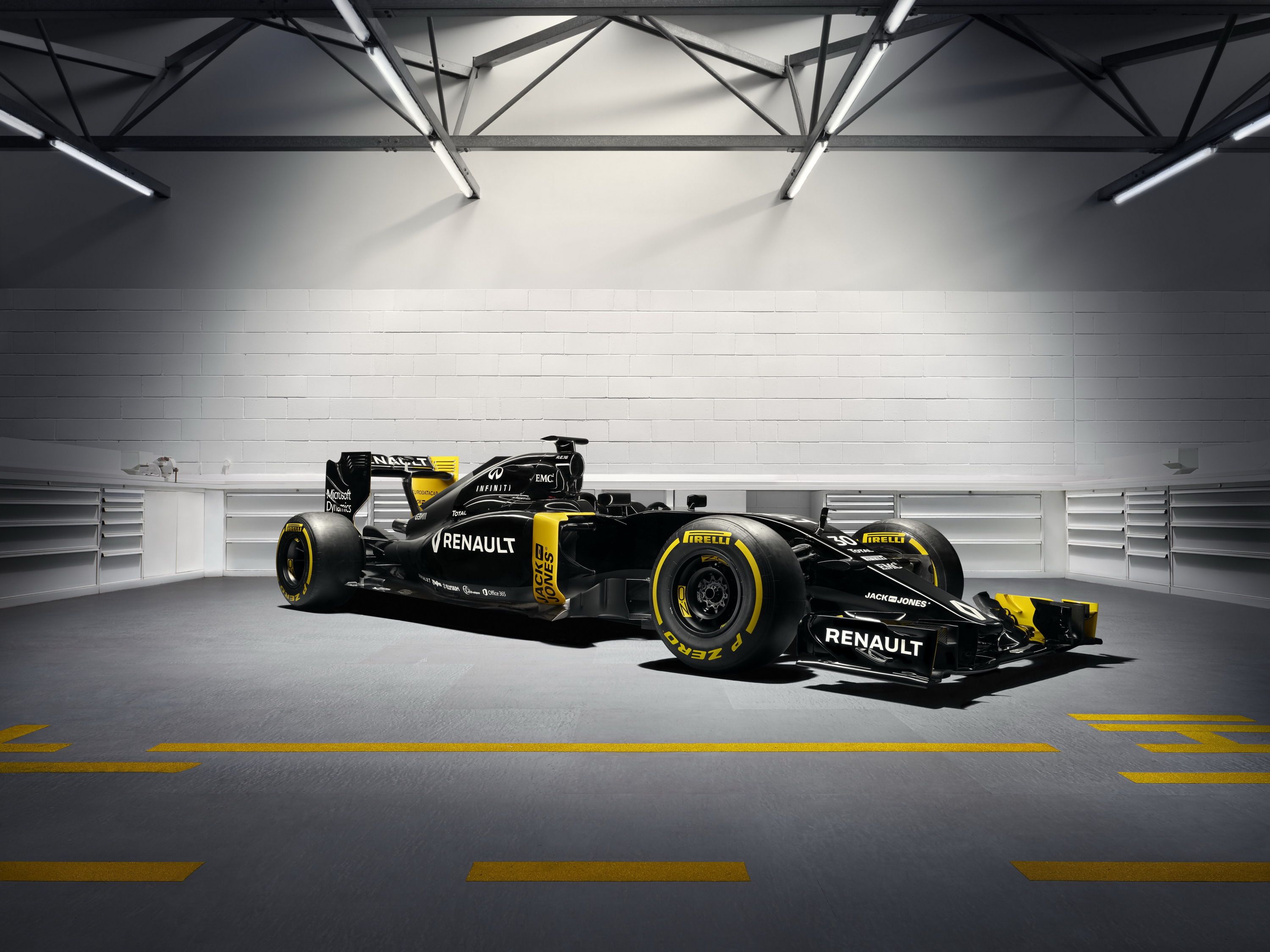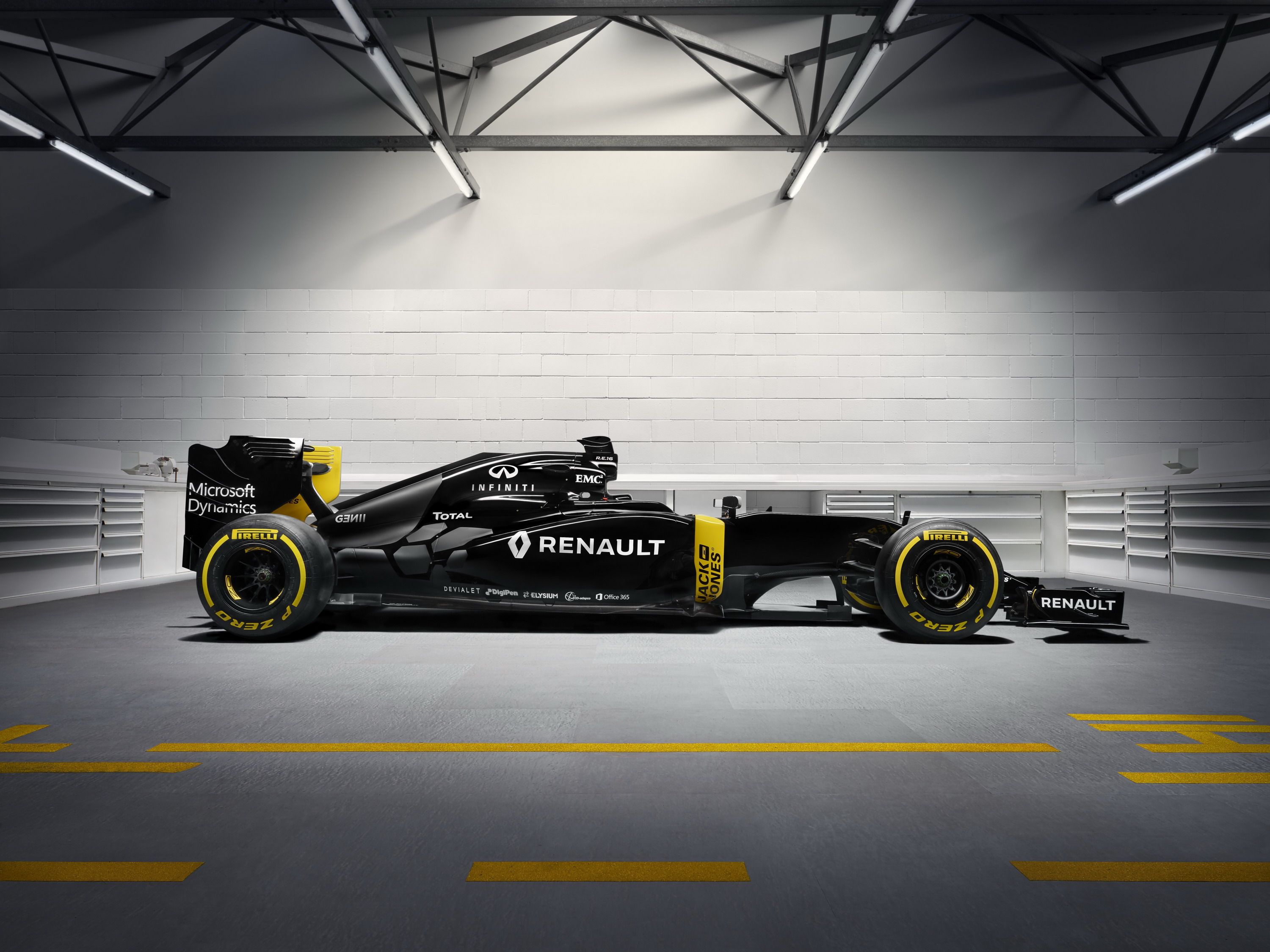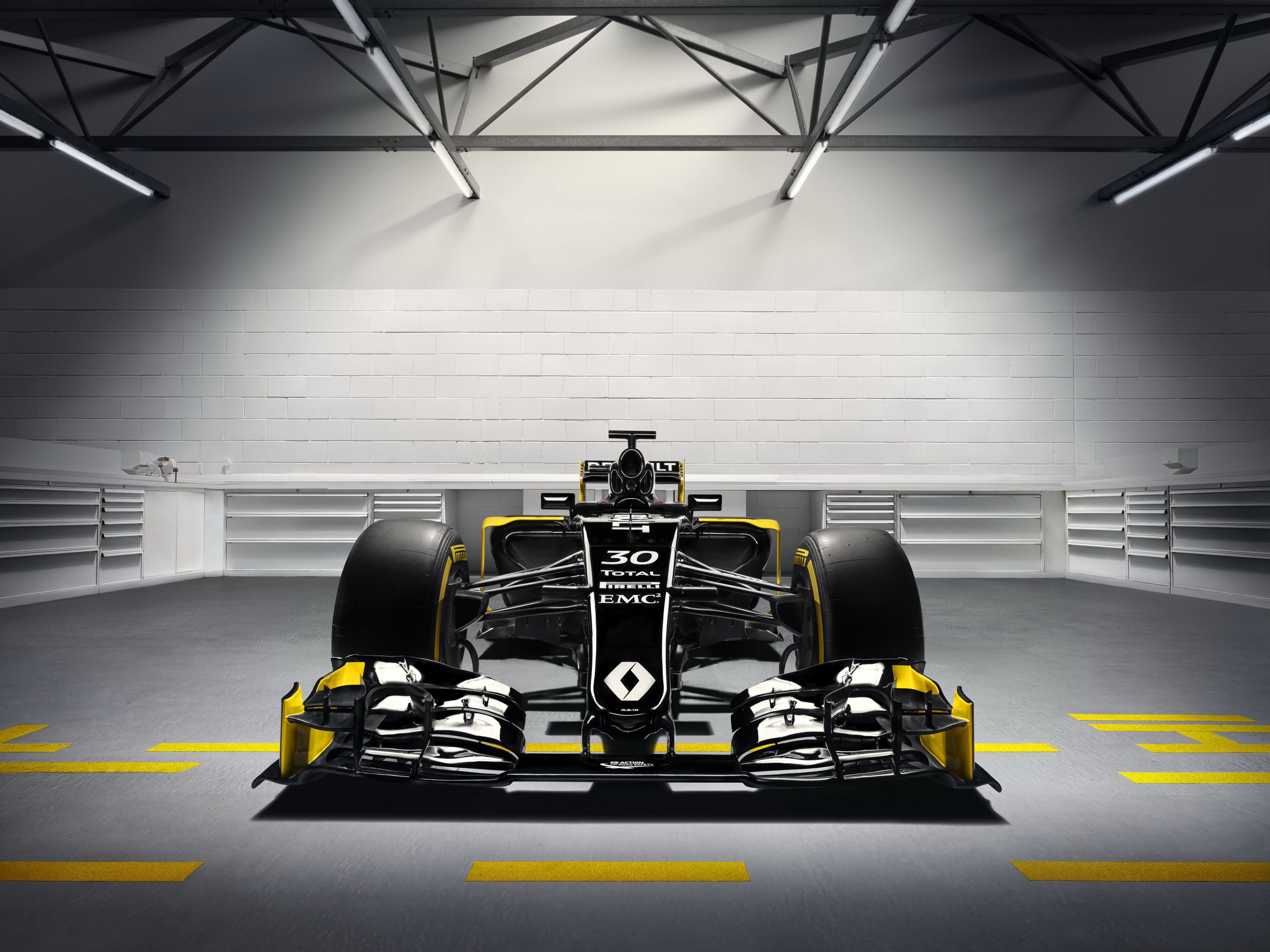Renault’->ke72s F1->ke190 history begins in 1977, back when turbochargers were first introduced to the series. In the four decades that followed, the marque saw varying levels of involvement, both as a constructor and as an engine provider. In 2005, Spanish driver Fernando Alonso helped Renault score its first Constructor’s Championship, an achievement that was repeated the very next year. After 2006, Renault saw less success, and in 2011, the marque withdrew as a constructor. Now, after five years as an engine provider, Renault is back, announcing it will purchase the Lotus->ke49 F1 Team for a full-blown constructor’s bid in 2016.
The new F1 effort is part of a comprehensive plan to revamp Renault’s motorsports programs. According to Renault CEO Carlos Ghosn, Renault Sport will be replaced by two separate entities – Renault Sport Cars and Renault Sport Racing.
Renault Sport Cars will be an evolution of Renault Sport Technologies, taking responsibility for road car development, commercialization, brand appeal, and the Renault performance vehicle portfolio, including models like the Megane RS, Megane GT, and Clio RS.
As you can probably guess, Renault Sport Racing will be the automaker’s presence on the track, with series like Formula Renault 2.0 and Renault Sport RS01 Trophy falling under its jurisdiction, as well as customer racing and rally programs.
At the center of Renault Sport Racing will be the new Formula 1 effort. This year’s Renault RS 16 F1 car is heavily based on last year’s Lotus car, which means a lot of development is needed before the marque can expect to be competitive against F1 heavyweights like Ferrari->ke252 and Mercedes. ->ke187
Nonetheless, the team says it’s up to the challenge, so let’s take a look at the new Renault F1 car and see how it fits into the current regulations.
Continue reading to learn more about the Renault RS 16 Formula 1.
2016 Renault RS 16 Formula 1
- Make: Array
- Model: 2016 Renault RS 16 Formula 1
- [do not use] Vehicle Model: Array
Exterior
Renault unveiled the RS 16 wearing a black and yellow livery, harkening back to the old Renault-Lotus team of the ‘80s. However, Renault says the competition-spec livery has yet to be revealed, so expect some changes by the time the 2016 season gets underway.
The same goes for the bodywork, as official testing will undoubtedly tweak to final aero package going forward.
That said, there are still rigorous FIA regulations pertaining to the car’s exterior spec. For example, maximum car height is capped at 950 mm (37.4 inches), while max car width (excluding the tires) is set at 1,800 mm (70.87 inches).
This year, the pass-promoting Drag Reduction System (DRS) once again returns in the hope of livening up races with more overtakes. For those who don’t know, DRS alters the rear wing angle for less drag, consequently yielding greater straight-line speed. Of course, there are very specific rules mandating where and when DRS can be used, and as soon as the driver hits the brakes, the moveable wing slams down for greater downforce.
Interior
The “Interior” of an F1 car is designed to harmonize man and machine – unless, of course, there’s an impact.
In the event of an accident, a wide range of safety measures are in place to keep the driver as safe as possible. Essentially a composite tub, the F1 cockpit uses anti-intrusion panels made from a synthetic polymer called Zylon. The flexible fuel cell is located directly behind the single seat. The keep the driver in place, a racing harness is used, employing two shoulder straps, an abdominal strap, and two straps between the driver’s legs. A quick release steering wheel allows the driver to exit the cockpit within five seconds, even in full racing gear.
A soft padding lines the surfaces surrounding the driver’s head and legs, and the steering column is deformable should the driver hit his head on the wheel. Roll structures are in place behind and in front of the cockpit, a fire extinguisher system is installed to douse unexpected combustion around the driver and engine compartment, and a track signal display is used to relay marshal flag information in case the driver happens to miss it while zooming by at a buck eighty.
Drivetrain
Historically, Renault’s power units have enjoyed a good deal of success, particularly in the back of Red Bull Racing cars piloted by Sebastian Vettel. Last year, however, Renault’s power units couldn’t match the reliability and power standards set by Mercedes and Ferrari.
Thanks to the strategic partnership Renault enjoys with Nissan, Infiniti is stepping in to assist with the hybrid technology elements, sending specialists from Japan to work at Renault’s motorsports center in Viry-Chatillon, France. Nissan will leverage experience gained during the development of the Q70 and Q50 sedans, both of which offer hybrid drivetrains.
If you were unaware, the term “power unit” refers to six individual components: the internal combustion engine, motor generator unit-kinetic (MGU-K), motor generator unit-heat (MGU-H), energy storage, turbocharger, and control electronics. Per FIA regulations, drivers are allowed to use just five of these components per season. Using all six results in a harsh grid penalty. Only five power units per driver per season are allowed.
The screaming heart of every 2016 F1 car is a single-turbo, 1.6-liter six-cylinder engine, with two banks arranged in a 90-degree vee formation and four valves per cylinder. The crankcase, block, and pistons are made from an aluminum alloy, the crankshaft and camshafts are made from iron alloy, and the valves are made from either iron, nickel, cobalt, or titanium alloy. Fuel flow is capped at 100 kg per hour.
Due to widespread complaints from fans about the way the turbo engines sound, new regulations were put in place for separate exhaust pipes between the turbine and wastegate, essentially making for a louder exhaust note.
The Energy Recovery System is comprised of the MGU-K, situated in the powertrain before the clutch, and the MGU-H, situated in the exhaust, as well as the energy storage (essentially a battery).
Incredibly, all this hardware weighs in at just 320 pounds, and with the extra 161 horsepower from the hybrid system, total output is north of 875 horsepower – a sizable amount when you consider minimum car weight is just 702 kg (1,548 pounds), including the driver, tires, and fuel.
A semi-automatic paddleshifter transmission is tasked with routing it all to the rear wheels. The gearbox has eight forward gears (plus reverse), and uses fixed ratios made from steel. Fully automatic transmissions, continuously variable transmissions, and traction control are not allowed. The FIA permits one gearbox per six consecutive events, with grid penalties implemented for transmission changes outside those regulations.
For 2016, the FIA is allowing expanded power unit development, which will be huge for Renault as it works to get up to speed with the new drivetrain components.
Chassis And Handling
One of the biggest challenges facing Renault’s engineers this year is the integration of the new Renault power unit into the existing chassis. Originally fitted with a Mercedes drivetrain, the Lotus-turned-Renault is currently undergoing rapid development at Renault’s U.K. motorsports center in Enstone to get it ready for the 2016 season.
New this year, tire provider Pirelli will offer up a fifth compound called “ultrasoft,” as well as the option for three different dry-compounds per race. This hopefully will open up new and interesting race strategies, giving an edge to whichever team can best utilize the new rubber.
The wheels are made from a magnesium alloy and are affixed to the car using a single fastener. Wheel width is between 305 and 355 mm (12 and 14 inches) in front, and between 365 and 380 mm (14.37 and 14.96 inches) in the rear.
Brakes at each corner use a disc with a maximum diameter of 278 mm (10.94 inches) and a thickness of 28 mm (1.1 inches). There is one aluminum caliper per disc, with a maximum of six pistons and two pads. ABS is banned, as is non-air cooling.
Active suspension systems are also banned. Power steering is allowed, but the system can’t be electronically controlled or powered.
Competition
Mercedes
With Lewis Hamilton and Nico Rosberg on the driver’s roster, Mercedes managed to once again clinch the Manufacturer’s Championship in dominant fashion last year, winning all but three grand prix races. However, simmering tensions between Hamilton and Rosberg still exist, and it’s possible the Mercedes’ reign could come to a crashing end as both men vie for the lead.
Ferrari
After a troubling season in 2014, Ferrari rebounded last year, coming back as the only manufacturer capable of taking a win from Mercedes. With two seasoned champions onboard (Kimi Raikonnen, 2007, and Sebastian Vettel, 2010, 2011, 2012, and 2013), Ferrari certainly has the talent to perform. Now leaner and meaner following a staff reshuffle, all the team needs is the right car.
Conclusion
Suffice to say, there’s still a lot of work to be done to make the RS 16 competitive. The car’s first test is scheduled for February 21st, while the season opener in Melbourne is on March 20th, which means the rush is most definitely on.
Of course, CEO Ghosn knows it’ll take some time before Renault makes it out of the pack. He predicts a podium within three years, which is entirely achievable if development continues at a steady pace.
Either way, it’s great to see Renault back in mix as a true-blue constructor. Whether or not it’ll bring the speed, however, remains to be seen.








